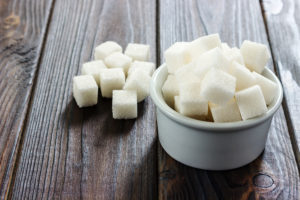Why You Can Benefit from the Yeast-Free Diet
Do you have symptoms such as constipation, yeast infections, skin rashes, headaches, joint pain, bloating, abdominal pain, heartburn, gas and indigestion? You may be tempted to try over the counter medications for symptom relief, only to find that the symptoms keep coming back. Dr. Hotze reveals why you can benefit from the yeast-free diet.
Podcast Highlights
1:47: Yeast plays a function and all of us have a little bit of yeast in our system and it’s in balance with natural healthy bacteria.
2:45: When a person has a secondary pathogenic infection, a physician will normally prescribe antibiotics to kill the bacteria.
2:56: Unfortunately, not only will those antibiotics kill the pathogenic or dangerous bacteria, but also kills some of the healthy normal bacteria and yeast will overgrow, because we all have a balance in our system between a little yeast and the bacteria. It’s just there and it lives in balance, but when you kill the good bacteria, you can get a yeast overgrowth.
3:37: Yeast grows on sugar.
4:22: Some of the women had recurrent yeast infections. The other problem was particularly with the bloating, belching, gas, indigestion, gastroesophageal reflux, diarrhea, maybe skin disorders, skin rashes. They had recurrent headaches, they felt fatigued, they couldn’t think clearly. They had some muscle aches and pains. They had fungus under their toenails. They had a problem with yeast overgrowth.
5:06: Another thing that can happen is an individual can become allergic to yeast, so then when they eat yeast products, because they have yeast in their system, they’re making antibodies to it, they begin to react and have allergy symptoms.
6:43: If you want to activate the yeast, you put sugar in it and it bubbles up. That’s what happens in the gut. That’s why people get gas, indigestion, bloating and belching, and gastroesophageal reflux and indigestion. All these symptoms can come from yeast.
6:58: The way to treat it is fairly simple. You go on a yeast-free eating program. That means you eliminate sugar, you eliminate the simple carbohydrates from your eating plan altogether. You eat meats, you eat vegetables, and you eat good oils.
Podcast Transcription
Stacey B: Thank you for joining us today here at Dr. Hotze’s Wellness Revolution. I’m Stacey Bandfield here with Dr. Steven Hotze, founder of the Hotze Health & Wellness Center. Just a reminder, you can go to hotzepodcast.com. That’s hotzepodcast.com to download all of our podcast programs.
Now, this is a topic that affects a lot of people. There have been a lot of times it’s not talked about because some of the side effects, and even the name sounds, ugh. Yeast overgrowth. What is that? That sounds disgusting, a little bit. Explain to us Dr. Hotze, about yeast overgrowth, what that is and how that affects so many people.
Dr. Hotze: Yeast is a form of fungus.
Stacey: I knew it. Ugh.
Dr. Hotze: Yeast, of course, is used to make bread rise. You put yeast in the bread. We have yeast that ferments alcoholic products. In wine or any kind of alcoholic product you have a yeast fermentation that produces the alcohol content in the various products, liquor products. Beer, wine and other grain products like whiskeys and scotch.
Stacey: It serves a function.
Dr. Hotze: And vodka. As we mentioned, you have to have yeast to help bread rise. Yeast plays a function and all of us have a little bit of yeast in our system and it’s in balance with natural healthy bacteria. You may not be aware, but all of us within our system have good healthy bacteria. It’s really called formally autochthonous commensal bacteria.
Those are normal healthy bacteria that live within our colon. They line our skin. They’re in our oropharynx, line a woman’s vagina, and they are healthy bacteria. They keep bad bacteria out of our system so we’re not sick. They really help us digest our food in our gut and even produce some vitamins that are helpful to us. They provide a meaningful function. Those are healthy commensal normal bacteria.
The bacteria that are bad are the pathogenic bacteria. These are the bacteria that cause us to have illnesses. You think of strep infections, staph infections, pseudomonas infections and other type of bacterial infections that cause problems. When a person has a secondary pathogenic infection, a physician will normally prescribe antibiotics to kill the bacteria.
Unfortunately, not only will those antibiotics kill the pathogenic or dangerous bacteria, but also kills some of the healthy normal bacteria and yeast will overgrow, because we all have a balance in our system between a little yeast and the bacteria. It’s just there and it lives in balance, but when you kill the good bacteria, you can get a yeast overgrowth.
Women commonly will say, “When I take an antibiotic, I get recurrent female yeast infections, and I need to have something to treat that.” You can treat the female yeast infection, but not only did you have a yeast female infection, but also you have some yeast in the gut, in the colon. This happens both in men and women when they take antibiotics.
Yeast grows on sugar. When you have a high sugar diet, which is a high starch or carbohydrate diet, a lot of breads, pizzas, pastas, cakes, and those sort of things, you’re going to notice some symptoms develop if you have a yeast overgrowth, and this can happen from just one course of antibiotics or several courses of antibiotics.
I found this out when I first started treating for allergies back in the late 1990s when I started testing and treatment as an allergist. A lot of the patients that I saw who came in and had recurrent and chronic infections, and they had been on multiple antibiotics, and they had symptoms of yeast.
Symptoms of Yeast Overgrowth
Some of the women had recurrent yeast infections. The other problem was particularly with the bloating, belching, gas, indigestion, gastroesophageal reflux, diarrhea, maybe skin disorders, skin rashes. They had recurrent headaches, they felt fatigued, they couldn’t think clearly. They had some muscle aches and pains. They had fungus under their toenails. They had a problem with yeast overgrowth.
I’ve read about this in a book called The Yeast Connection by Dr. Crook. It was a great book, and I began to treat my guests for yeast problems when they had all these symptoms of yeast, so I knew that to get them healthy…
Yeast Allergy
Another thing that can happen is an individual can become allergic to yeast, so then when they eat yeast products, because they have yeast in their system, they’re making antibodies to it, they begin to react and have allergy symptoms. Whenever they eat bread products or whether they have wine or some alcoholic beverage or vinegar or something like that, that has yeast products in it, they begin to react to that, so they get yeast sensitivity or yeast allergy.
Stacey: Dr. Hotze, isn’t it true that when people develop allergies to something like yeast, they tend to also crave… it creates a craving as well?
Dr. Hotze: Particularly on yeast, because yeast grows on sugar, and yeast produces toxins, and the toxins are released into the system. They get in our blood stream. They circulate, so they’re toxic. Yeast is a form of mold or fungi, and it produces mold toxins, which are toxic. They’re toxic to our system, so they can cause a host of problems, and yeast grows on sugar, so when it doesn’t get enough sugar and it’s in your system, it begins to secrete toxins and the only way that you can relieve that is to feed the yeast. You got to feed him sugar and then it can calm down.
But unfortunately, when you feed him your starch or sugar products, you get these cravings for sugar or starches, and then you get bloating, belching and gas because yeast produces gas. Just like when you make bread rise, the way you do it, you get your dough and you knead it, but you have to get it to rise, so you have to take a glass of water and put some yeast in the glass of water. If you want to activate the yeast, you put sugar in it and it bubbles up. That’s what happens in the gut. That’s why people get gas, indigestion, bloating and belching, and gastroesophageal reflux and indigestion. All these symptoms can come from yeast.
 The way to treat it is fairly simple. You go on a yeast-free eating program. That means you eliminate sugar, you eliminate the simple carbohydrates from your eating plan altogether. You eat meats, you eat vegetables, and you eat good oils. You eliminate all sugars. That includes fruit sugars for minimally a month and you take an oral medication called Nystatin. Nystatin kills yeast in the spore form in the colon.
The way to treat it is fairly simple. You go on a yeast-free eating program. That means you eliminate sugar, you eliminate the simple carbohydrates from your eating plan altogether. You eat meats, you eat vegetables, and you eat good oils. You eliminate all sugars. That includes fruit sugars for minimally a month and you take an oral medication called Nystatin. Nystatin kills yeast in the spore form in the colon.
Then after a month or so, you can take another medication called diflucan, which kills yeast in the mycelial form, when it grows into the colon wall. You want to kill in both aspects. You do that and you go on a yeast-free eating program for about three months.
If you’ll do that and you take that Nystatin, then you clean up your gut, and you’ll find you’ll feel so much better, because you don’t have the yeast in your system producing the toxins, which are causing a host of symptoms from headaches to allergy problems to skin rashes and skin disorder to bloating, belching, gas and all the other things associated with yeast overgrowth. It’s very simply treated, and you’ll find that if you’ll do that, it will have a dramatic improvement in your overall health and wellness and wellbeing.
Stacey: Remember, everybody needs a health coach, and here at the Hotze Health & Wellness Center, it would be a privilege to serve you, and like Dr. Hotze said, yeast is something that can be a real problem; however, it can be treated naturally and of course we also have the medications as well that can kill that yeast and get you on a path of health and wellness so give us a call at 281-698-8698. That’s 281-698-8698. Thank you for joining us today, here at Dr. Hotze’s Wellness Revolution.

